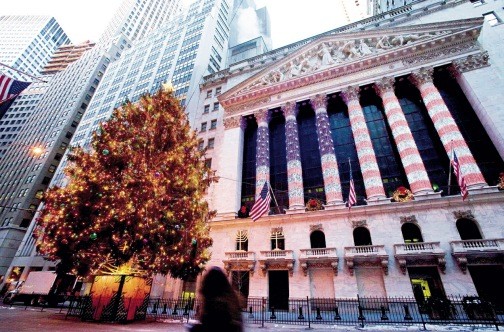Consider exchangetraded funds in your portfolio Business
Post on: 30 Март, 2015 No Comment

SSL In The Money
AN exchange-traded fund (ETF) is an investment fund that is traded on stock exchanges, much like stocks. It is comprised of assets such as stocks, commodities or bonds, and trades close to its net asset value over the course of the trading day.
Most ETFs track an index, such as a stock index or bond index, and may be attractive investments due to their low costs, tax efficiency, and stock-like features.
An ETF encompasses features of a mutual fund, which can be bought or sold at the end of each trading day for its net asset value. Therefore, an ETF is a type of fund that a corporation or trust owns (bonds, stocks, gold bars, currencies) and divides ownership of itself into shares that are held by shareholders.
The details of the structure can vary by country and maintain their own brand, such as SPDR or iSHARES, etc. The shareholders indirectly own the assets of the fund and are entitled to a share of the profits in the form of interest or dividends. While there are many similarities to traditional mutual funds, the difference is that the shares in an ETF can be bought and sold all through the day, like stocks on an exchange.
Unlike traditional mutual funds, ETFs mimic an index and trade accordingly, whereas the mutual fund is managed by fund managers with the ability to allocate funds as desired within a predetermined investment objective/class. Mutual funds attract sometimes high management fees and transaction costs which do not apply to ETFs.
The ability to purchase and redeem creation units gives ETFs an arbitrage method intended to minimise the potential variation between the market price and the net asset value of ETF shares. Existing ETFs have transparent portfolios, so institutional investors will know exactly what portfolio assets they must assemble if they wish to purchase a creation unit, and the exchange distributes the updated net asset value of the shares throughout the trading day.
At the very least, there simply has to be some consideration to include an ETF in your portfolio in the pursuit of wealth creation, preservation or hedging. One may consider ETFs as a long-term investor along with index and actively managed mutual funds as a component of an overall asset allocation strategy, which requires little monitoring and provides some stability for future returns.
If one is an active trader or a more sophisticated investor looking to make short-term tactical shifts, manage risk, minimise taxes, or put excess cash to work, then ETFs may be able to help you.
ETFs can provide easy access to various corners of the market, for instance, different sectors, industries, and styles, without actually being fully immersed in the sector. This means one can invest from the comfort of their home in Jamaica in an emerging market such as India, without having to invest directly through a stock exchange in India.
ETFs can also provide a relatively inexpensive and flexible way for investors to get in and out of the market intraday without having to pay short-term redemption fees. Investors will be required to pay brokerage commissions and bid-ask spreads on ETFs every time they trade, as is the same with trading stock on a regular exchange. In short, there are many different strategies for using ETFs in your portfolio. Here are five well-tested ETF approaches for long-term investors and active traders to consider.
1. It provides asset allocation capabilities, enabling the possibility to buy an ETF that is already diversified across different asset classes or even geographic locations. An investor can take a passive approach to asset allocation by rebalancing the portfolio only to ensure it returns to the long-term or strategic asset mix or overweighting those asset classes that are expected to outperform in the shorter term and underweighting the others.
2. ETFs allow the investor not only to diversify across all the major asset classes, such as US equity, foreign equity and fixed income, but also to diversify into investments that have a low correlation to the major asset classes. This includes areas like commodities, real estate, emerging markets, small cap stocks, and others.
3. The use of ETFs allows for a variety of hedging strategies. Investors who want to be cautious against a drop in the market can purchase inverse ETFs which rise when the market falls. An investor concerned about inflation can circumvent it by investing in commodities or inflation-protected bond ETFs. Investors can use an ETF that can hedge against a very specific stock market.
4. ETFs can be used to partition cash, allowing investors an easy way to put their money in the stock market until a long-term investment decision is made. In this way, investors can ensure they do not miss out on price rises or sacrifice income while their money is parked temporarily.
5. An investor might want to swiftly gain exposure to specific sectors, styles or asset classes without having to obtain the prerequisite expertise in these areas. As an example, an investor who has no expertise in emerging markets can buy an ETF based on an emerging market index. Using ETFs allows an investor to easily fill the holes in his or her portfolio.
ETFs can be a valuable component for any investor’s portfolio, from the most sophisticated institutional money manager to a novice, but should be considered in portfolio and with an advisor. Here at SSL, our advisors stand ready to make investing easy.
— Andre Edwards is a Financial Advisor at Stocks & Securities Ltd














